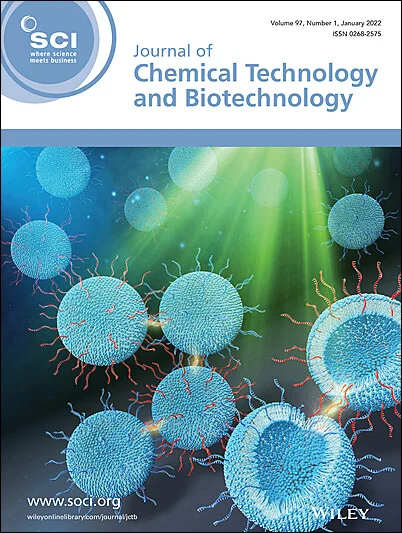Priya Dharshini Palanivel, Samsudeen Naina Mohamed, Gunda Mohanakrishna, Srinithya Ravinuthala, S Saravanan
求助PDF
{"title":"An insight on energy production using microbial fuel cell: A microbiological perspective and electron transfer improvement","authors":"Priya Dharshini Palanivel, Samsudeen Naina Mohamed, Gunda Mohanakrishna, Srinithya Ravinuthala, S Saravanan","doi":"10.1002/jctb.7788","DOIUrl":null,"url":null,"abstract":"<p>Microbial fuel cells (MFCs) are sustainable energy technologies that could resolve pollution challenges brought by various activities. It can meet energy demand by producing bioelectricity through catabolizing organic matter. Over the past two decades, research on many microbes have been used in MFCs, which intrigued researchers to explore the underlying electron transfer mechanism between microbe and anode. Electron transfer between electrode and microorganism occurs via different pathways: direct, indirect electron transfer and interspecies electron transfer. <i>Shewanella</i> and <i>Geobacter</i> are well-known for microbe–electrode and microbe–microbe electron transfer. This review provides an overview of the significant varieties of microbes utilized in MFCs for simultaneous bioelectricity generation and wastewater treatment. Mechanisms of different modes of electron transfer involved during the oxidation of organic wastes in the anode section of MFCs are highlighted. Furthermore, this review also details some of the techniques to promote extracellular electron transfer efficiency which is important for the enhanced performance of MFC in terms of power, current generation and wastewater remediation. A perspective of challenges to be addressed for the effective functioning of these technologies, opportunities for MFC systems to be scaled up and associated techno-economic analysis are discussed. © 2024 Society of Chemical Industry (SCI).</p>","PeriodicalId":15335,"journal":{"name":"Journal of chemical technology and biotechnology","volume":"100 4","pages":"672-687"},"PeriodicalIF":2.8000,"publicationDate":"2024-11-28","publicationTypes":"Journal Article","fieldsOfStudy":null,"isOpenAccess":false,"openAccessPdf":"","citationCount":"0","resultStr":null,"platform":"Semanticscholar","paperid":null,"PeriodicalName":"Journal of chemical technology and biotechnology","FirstCategoryId":"5","ListUrlMain":"https://onlinelibrary.wiley.com/doi/10.1002/jctb.7788","RegionNum":4,"RegionCategory":"生物学","ArticlePicture":[],"TitleCN":null,"AbstractTextCN":null,"PMCID":null,"EPubDate":"","PubModel":"","JCR":"Q3","JCRName":"BIOTECHNOLOGY & APPLIED MICROBIOLOGY","Score":null,"Total":0}
引用次数: 0
引用
批量引用
Abstract
Microbial fuel cells (MFCs) are sustainable energy technologies that could resolve pollution challenges brought by various activities. It can meet energy demand by producing bioelectricity through catabolizing organic matter. Over the past two decades, research on many microbes have been used in MFCs, which intrigued researchers to explore the underlying electron transfer mechanism between microbe and anode. Electron transfer between electrode and microorganism occurs via different pathways: direct, indirect electron transfer and interspecies electron transfer. Shewanella and Geobacter are well-known for microbe–electrode and microbe–microbe electron transfer. This review provides an overview of the significant varieties of microbes utilized in MFCs for simultaneous bioelectricity generation and wastewater treatment. Mechanisms of different modes of electron transfer involved during the oxidation of organic wastes in the anode section of MFCs are highlighted. Furthermore, this review also details some of the techniques to promote extracellular electron transfer efficiency which is important for the enhanced performance of MFC in terms of power, current generation and wastewater remediation. A perspective of challenges to be addressed for the effective functioning of these technologies, opportunities for MFC systems to be scaled up and associated techno-economic analysis are discussed. © 2024 Society of Chemical Industry (SCI).
利用微生物燃料电池生产能源:微生物学观点和电子转移改进
微生物燃料电池(mfc)是一种可持续能源技术,可以解决各种活动带来的污染挑战。它可以通过分解有机物产生生物电来满足能源需求。在过去的二十年中,对许多微生物的研究已被用于mfc,这激发了人们对微生物与阳极之间潜在的电子传递机制的探索。电极与微生物之间的电子传递途径不同:直接电子传递、间接电子传递和种间电子传递。希瓦氏菌和地杆菌是众所周知的微生物-电极和微生物-微生物的电子转移。本文综述了mfc中用于同时生物发电和废水处理的重要微生物种类。重点介绍了有机废物在mfc阳极段氧化过程中不同电子转移模式的机理。此外,本文还详细介绍了提高细胞外电子转移效率的一些技术,这些技术对提高MFC在发电、发电和废水修复方面的性能具有重要意义。本文讨论了这些技术有效运作所面临的挑战、MFC系统扩大规模的机会以及相关的技术经济分析。©2024化学工业学会(SCI)。
本文章由计算机程序翻译,如有差异,请以英文原文为准。

 求助内容:
求助内容: 应助结果提醒方式:
应助结果提醒方式:


